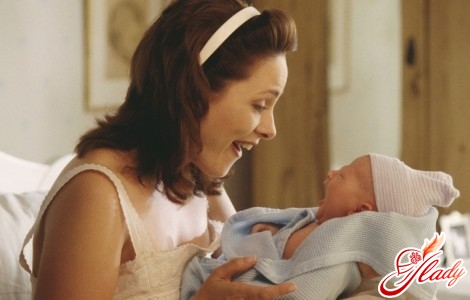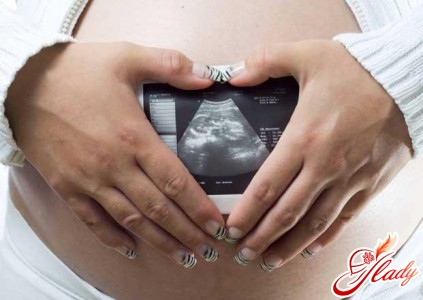 There is an opinion about extreme traumatismoperations of imposing obstetric forceps and vacuum extraction of the fetus per head. Indeed, the relative number of injuries received during childbirth in which these operations are performed is higher than during childbirth, which may end spontaneously. The fact is that here the cause and effect are reversed. The cause of injury to the fetus is not in the operation, but in the condition in which it is produced. Think about yourself, what to do if the fetal head has already descended into the pelvic area, and the birth activity has weakened? On the monitor, which fixes the heartbeat of the fetus, the obstetrician sees how it first increases, then becomes irregular and, finally, begins a bradycardia - a decrease in heart rate. It is clear that the child is in danger and, if he does not take urgent measures, he will die. The operation of caesarean section in this situation is impossible. Yes, and extract the fetus through the incision in the uterus, when its head has already descended into the pelvic area, is very difficult and will necessarily lead to trauma to the child and mother. The only thing that is possible here is the operation of applying obstetrical forceps or vacuum extraction of the fetus. But the child already suffers from hypoxia, and it is quite obvious that after birth he will feel far from the best way. Undoubtedly, the operation should be performed by an experienced specialist with careful observance of the technique of its implementation and, most importantly, in a timely manner, that is, when the fetal condition has not significantly deteriorated or there is only a threat to its health. The essence of operations of imposing obstetric forceps and vacuum extraction of the fetus is that with the help of special devices an additional force is created to extract the fetus from the birth canal. The difference between operations is not so much in the way of extraction of the fetus, but in the fact that the forceps can completely replace the labor activity (eliminate the need for attempts), and vacuum extraction only complements the labor of the parturient child. Therefore, when the strain in labor is contraindicated (this happens with heart defects in pregnant women, OPG-gestosis with high blood pressure, hypertension, etc.), obstetric forceps are placed at the end of the second stage of labor. With the weakening of the ancestral forces and the threat of fetal hypoxia, both these operations can be performed. Extraction of the fetus by the head does not lead, as is sometimes thought, to stretching the fetal neck and trauma to the cervical spine, since when the fetal head is located in the pelvic cavity, the fetal shoulder belt is in its broadest part and does not interfere with its progress.
There is an opinion about extreme traumatismoperations of imposing obstetric forceps and vacuum extraction of the fetus per head. Indeed, the relative number of injuries received during childbirth in which these operations are performed is higher than during childbirth, which may end spontaneously. The fact is that here the cause and effect are reversed. The cause of injury to the fetus is not in the operation, but in the condition in which it is produced. Think about yourself, what to do if the fetal head has already descended into the pelvic area, and the birth activity has weakened? On the monitor, which fixes the heartbeat of the fetus, the obstetrician sees how it first increases, then becomes irregular and, finally, begins a bradycardia - a decrease in heart rate. It is clear that the child is in danger and, if he does not take urgent measures, he will die. The operation of caesarean section in this situation is impossible. Yes, and extract the fetus through the incision in the uterus, when its head has already descended into the pelvic area, is very difficult and will necessarily lead to trauma to the child and mother. The only thing that is possible here is the operation of applying obstetrical forceps or vacuum extraction of the fetus. But the child already suffers from hypoxia, and it is quite obvious that after birth he will feel far from the best way. Undoubtedly, the operation should be performed by an experienced specialist with careful observance of the technique of its implementation and, most importantly, in a timely manner, that is, when the fetal condition has not significantly deteriorated or there is only a threat to its health. The essence of operations of imposing obstetric forceps and vacuum extraction of the fetus is that with the help of special devices an additional force is created to extract the fetus from the birth canal. The difference between operations is not so much in the way of extraction of the fetus, but in the fact that the forceps can completely replace the labor activity (eliminate the need for attempts), and vacuum extraction only complements the labor of the parturient child. Therefore, when the strain in labor is contraindicated (this happens with heart defects in pregnant women, OPG-gestosis with high blood pressure, hypertension, etc.), obstetric forceps are placed at the end of the second stage of labor. With the weakening of the ancestral forces and the threat of fetal hypoxia, both these operations can be performed. Extraction of the fetus by the head does not lead, as is sometimes thought, to stretching the fetal neck and trauma to the cervical spine, since when the fetal head is located in the pelvic cavity, the fetal shoulder belt is in its broadest part and does not interfere with its progress.

Making Money with Desserts: Success Stories
Yevhen Polishchuk (Fedutinov) instagram: @ evgeniyafedutinovavk.com / janeshomebaking– It all started with baking for relatives and friends. Gradually, she began uploading photos of her baking to Instagram, and orders began to come in. I made my first cake to order on October 13, 2014, and a little earlier I started making macarons and cupcakes. We can say that the business "found me myself", I am very [...]

Soups are cold recipes with photos
Cold cucumber soup with yogurt and lemonSorbet from La Taverna restaurant chef Alexander Zhurkina Photo: Getty Images Ingredients: Yoghurt without additives - 125 gCucumber - 150 gSorbet lemon / lime - 50 gCool shrimp - 24 gFresh ginger - 1 gLime lime - 5 gFresh orange juice - 5 gPetroshka - 1 g pink - 1 gCress salad - […]

barbeque kebab
Pork tenderloin glaze Photos: Dmitry Bayrak / dbstudio Cooking time: 20 minutes + time for pickling. Calorie content: 454 kcal per 1 serving. For 4 servings: 4 pork tenderloin (about 300 g each), 1 onion, 2 cloves of garlic, 1 tsp. lemon peel, 1 tsp. lemon juice, a pinch of ground cumin, coriander and turmeric, 1 tbsp. l vegetable [...]

Pierre Duacan: dietary recipes: Ducane diet
Beetroot Photo: Season'S, Luxury Hotels Representation You will need: · Boiled beets - 60 g · Fresh cucumbers - 20 g · Red radish - 20 g · Green onions - 10 g · Egg - 1 pcs · Mineral drinking water - 200 g · Salt - 1 g Ready: · Boil egg and beetroot. · Grind cucumbers, radishes and a part of beets. Putting everything [...]





